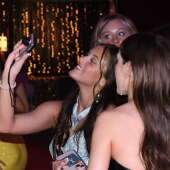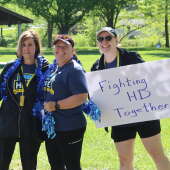Submit 1ST50k, Business Book Reading and Unplug
In this space of each B Magazine issue, Codefi and rustmedia team up to bring you a curation of the latest technological trends, business book reviews and news articles you should know about. Let us do the work of being cutting-edge while you sit back, do what you do and get smarter from enjoying the fruit of shared ventures. Because more good things get done when we work together.
This issue’s solutions for…
When You’re a Startup and Need $50,000:
Enter the 1ST50K Startup Competition.
Working on an idea, but need funding? Perfect — Codefi and the Marquette Tech District Foundation award $50,000 investments and are accepting applications now.
1ST50K is a startup competition that helps turn your innovative startup ideas into scalable ventures. Industry agnostic, the competition also offers extensive support from a broad business network and pro-bono development services, as well as the opportunity for teams to operate their business from Cape Girardeau for at least a year after receiving the grant.
Oh, yeah. The $50,000 is equity-free. No interest. No catch.
Past 1ST50K recipients doing winning-worthy things? Edible Education — a program that has taught over 22,000 kids to cook, putting their innovative mobile cooking cart in over 20 states since joining the program. There’s also Morning Star Behavioral Associates — an applied behavior analysis company that has launched an entrepreneurial advancement center for individuals with autism and is projected to hit $1 million in sales in their first year of the program.
What winning-worthy things could you be doing?
Find more information at 1ST50K.org. Applications are open March 1 to May 31. Bring it.
When You Want to Get Better at Something but Aren’t Improving:
Listen to the TEDTalk “How to Get Better at the Things You Care About” by Eduardo Briceño.
Beyoncé gets better at performing by watching videos of her concert after each performance, taking copious notes and passing these notes along to her team the next day. Then the camera staff, dancers and Queen B herself rehearse the areas they’ve identified for improvement before the evening’s performance.
At least, that’s what we hear. (Beyoncé never returned our call.)
In his TEDTalk, Briceño, leader of the growth mindset training services Mindset Works, tells this story in order to demonstrate the need for us in our workplaces to designate times to work in both the learning zone and the performance zone. In the learning zone, we lower the stakes so that making the mistakes necessary for learning and growth aren’t catastrophic as we rehearse skills to get better at a specific task. Then, in the performance zone, we are ready to perform what we’ve rehearsed in the learning zone. Improvement.
Some practical steps for creating a learning zone in your workplace include creating a low-stakes environment through mentorships and feedback progress meetings; reflecting on performance and implementing changes in your next performance; leading by example, asking questions when you don’t understand and sharing with others tasks that you want to improve in.
Call Bey again – maybe there’s still hope for our background dancing game.
When You Realize the Words “Bah” or “Humbug” Are Creeping Into Your Vocabulary a Bit Too Frequently:
Re-embrace Stephen R. Covey’s “Abundance Mentality.” Feel like you’re always grabbing more for yourself because you’re worried whatever it is you’re grabbing for will run out soon? Perhaps you’re operating under the scarcity mentality.
In the modern classic “The 7 Habits of Highly Effective People,” Stephen R. Covey advocates instead for the abundance mentality. While our world often conditions us to think in terms of win-lose, comparisons and competition, Covey upholds that we don’t have to continue this way. Abundance mentality believes there is enough for everyone to have a piece of the pie and seeks out mutual solutions that benefit both oneself and the other party.
To use this sort of thinking, share ideas and resources with your coworkers and whoever asks. Trust. Give. Be thankful. Get to know the “competition,” and together work towards win-win solutions.
See how it changes your workplace and life from one of always wanting more, to one of being grateful, and somehow still having enough.
When You’re Living Your Life Controlled By Your Smartphone:
Read “Irresistible: The Rise of Addictive Technology and the Business of Keeping Us Hooked,” by Adam Atler (March 7, 2018).
The average person spends about three hours each day using their smartphone. And teenagers who own a smartphone are spending even more time — an average of four and a half hours per day — plugged into screens, often to the detriment of their mental and physical health.
Tech addiction seems to be the next wave in the self-improvement movement. And maybe there is something to it — research is giving legitimacy to the addictive nature of smartphones, social media and Netflix. In his book, Atler uncovers how these technologies are intentionally designed to foster addiction in users.
So, how to unplug?
Set a consistent time each evening that will signal the end of your technology use for the day. Place your phone and other devices in a different room at dinnertime.
Spend technology-free time outside. Sketch a picture (with real pencil and paper). Play an instrument. Practice mindfulness, being present to the people around you.
Other titles on technology addiction include the article “Tech Bosses Limit Their Kids’ Time on Smartphones: Why Shouldn’t We?” by Jean M. Twenge (January 12, 2018), the blog post “Motherhood in the Age of Instagram” by Lindsay Hunter (February 16, 2018) and the book “How to Break Up With Your Phone: The 30-Day Plan to Take Back Your Life,” by Catherine Price (February 13, 2018).
Test your need for these technology addiction titles through your decision: download it on Kindle, or buy a paper copy?

































